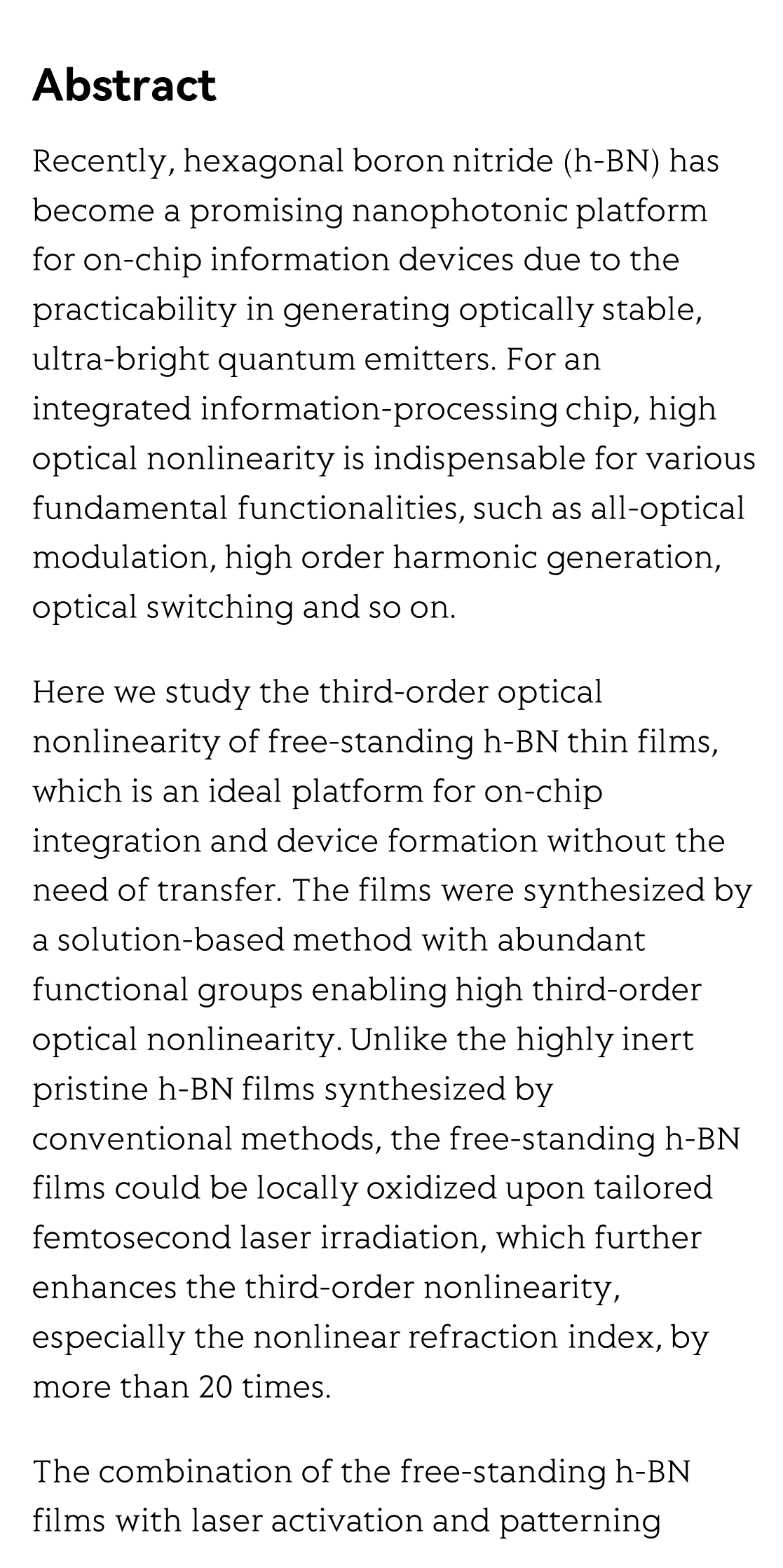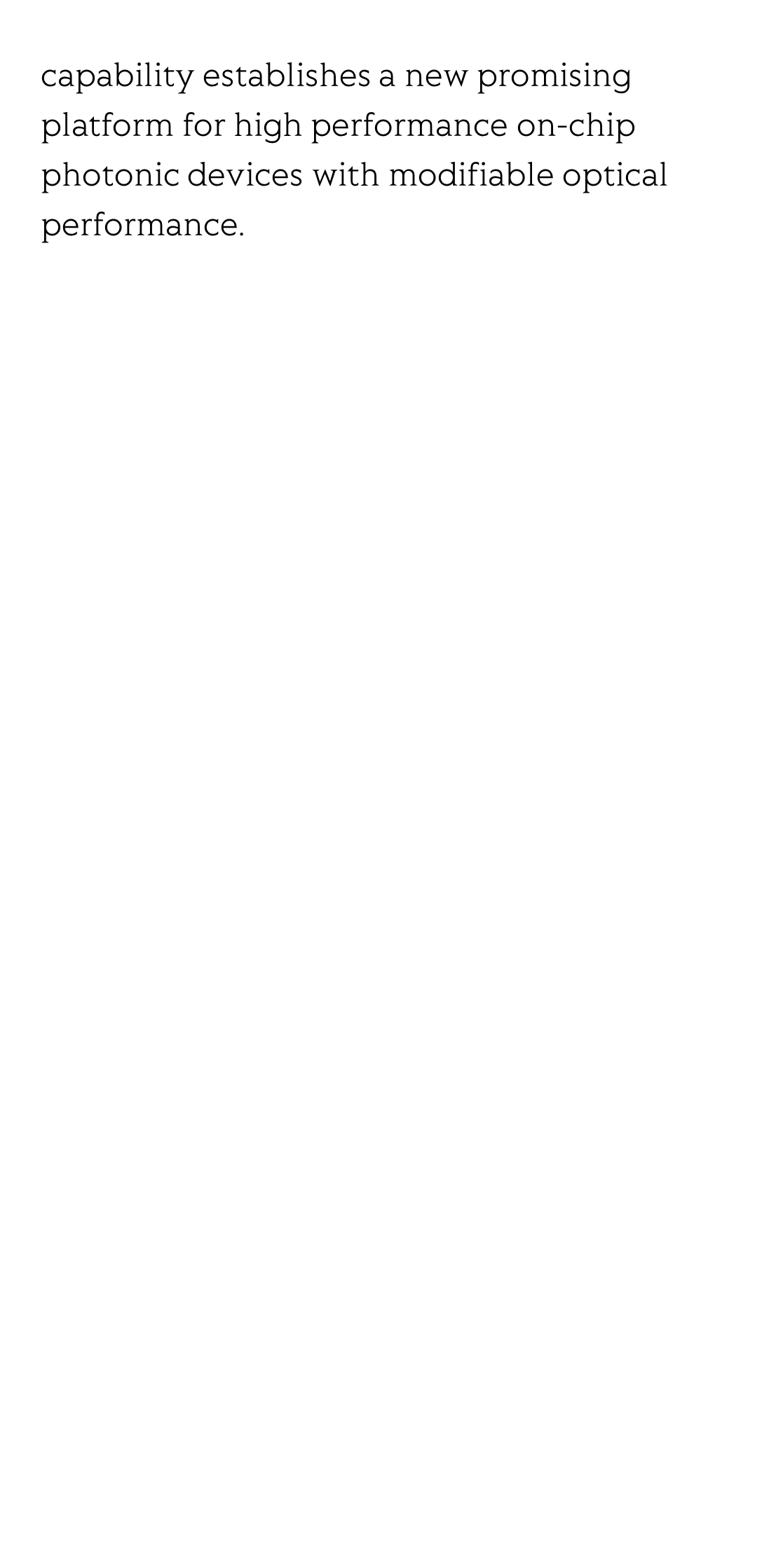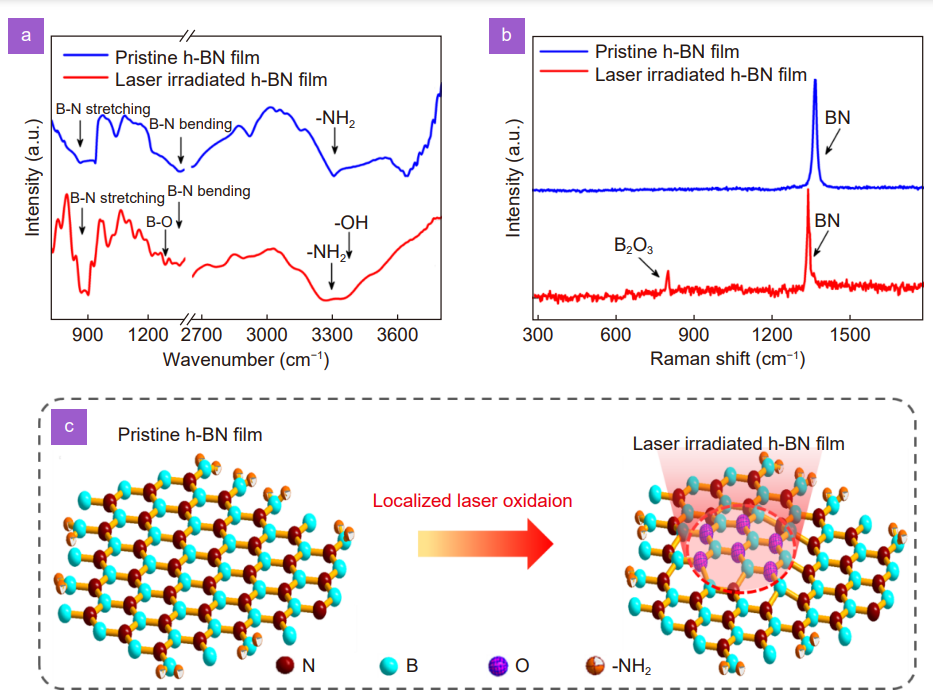(Peer-Reviewed) Giant and light modifiable third-order optical nonlinearity in a free-standing h-BN film
Jun Ren 任军 ¹ ², Han Lin 林瀚 ¹ ⁵, Xiaorui Zheng ¹, Weiwei Lei ³, Dan Liu ³, Tianling Ren 任天令 ², Pu Wang 王璞 ⁴, Baohua Jia 贾宝华 ¹ ⁵
¹ Centre for Translational Atomaterials, School of Science, Computing and Engineering Technologies, Swinburne University of Technology, P. O. Box 218, Hawthorn, Victoria 3122, Australia
² School of Integrated circuits, Tsinghua University, Haidian, Beijing 100084, China
中国 北京 海淀 清华大学集成电路学院
³ Institute for Frontier Materials, Deakin University, Geelong, Victoria 3216, Australia
⁴ Institute of Laser Engineering, Beijing University of Technology, Chaoyang, Beijing 100124, China
中国 北京 朝阳 北京工业大学激光工程研究院
⁵ The Australian Research Council (ARC) Industrial Transformation Training, Centre in Surface Engineering for Advanced Materials (SEAM), Swinburne University of Technology, Hawthorn, Victoria 3122, Australia
Opto-Electronic Science, 2022-06-21
Abstract
Recently, hexagonal boron nitride (h-BN) has become a promising nanophotonic platform for on-chip information devices due to the practicability in generating optically stable, ultra-bright quantum emitters. For an integrated information-processing chip, high optical nonlinearity is indispensable for various fundamental functionalities, such as all-optical modulation, high order harmonic generation, optical switching and so on.
Here we study the third-order optical nonlinearity of free-standing h-BN thin films, which is an ideal platform for on-chip integration and device formation without the need of transfer. The films were synthesized by a solution-based method with abundant functional groups enabling high third-order optical nonlinearity. Unlike the highly inert pristine h-BN films synthesized by conventional methods, the free-standing h-BN films could be locally oxidized upon tailored femtosecond laser irradiation, which further enhances the third-order nonlinearity, especially the nonlinear refraction index, by more than 20 times.
The combination of the free-standing h-BN films with laser activation and patterning capability establishes a new promising platform for high performance on-chip photonic devices with modifiable optical performance.
Flicker minimization in power-saving displays enabled by measurement of difference in flexoelectric coefficients and displacement-current in positive dielectric anisotropy liquid crystals
Junho Jung, HaYoung Jung, GyuRi Choi, HanByeol Park, Sun-Mi Park, Ki-Sun Kwon, Heui-Seok Jin, Dong-Jin Lee, Hoon Jeong, JeongKi Park, Byeong Koo Kim, Seung Hee Lee, MinSu Kim
Opto-Electronic Advances
2025-09-25
Dual-frequency angular-multiplexed fringe projection profilometry with deep learning: breaking hardware limits for ultra-high-speed 3D imaging
Wenwu Chen, Yifan Liu, Shijie Feng, Wei Yin, Jiaming Qian, Yixuan Li, Hang Zhang, Maciej Trusiak, Malgorzata Kujawinska, Qian Chen, Chao Zuo
Opto-Electronic Advances
2025-09-25







